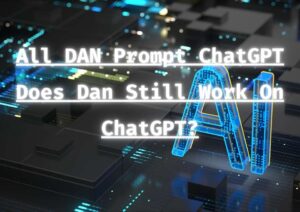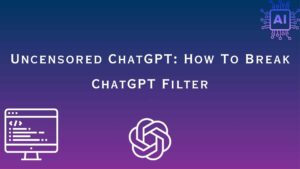AI Plagiarism
Plagiarism has emerged as a significant concern across various domains, including students, digital marketers, copywriters, and bloggers. It is universally condemned as an unethical practice that involves appropriating someone else’s content and presenting it as one’s own.
To combat plagiarism effectively, one can resort to content rewriting, which involves replacing crucial words with suitable synonyms and modifying voices and sentence structures where feasible.
However, manually rephrasing content can be time-consuming and labor-intensive, often leaving individuals with limited time and energy to accomplish the task. Therefore, finding an effortless yet efficient way to rewrite content becomes crucial.
While numerous AI-powered tools are available for plagiarism detection in content, there are also AI-based sentence rephrasing tools that can aid in eliminating plagiarism. But there is a lot of questions and confusion when it comes to AI generated content and plagiarism lets dive in to find out more
What is ai plagiarism?
AI plagiarism is a recently coined term after the advent of AI which means Plagiarism in AI generated content. Written Content by AI is not considered your own original work and it doesn’t matter which AI you use. Though AI generated content is based on language models and the content is sort of a spin off but normally it lacks citations and reference therefore making it quite likely to be plagiarized.
While AI-generated content itself may not be considered plagiarism since it is technically not copying someone else’s work, using it without proper acknowledgment or passing it off as one’s own can still be seen as a form of plagiarism.
AI Plagiarism Policy
Though there isn’t any universal accepted policy for AI generated content and plagiarism yet more and more organizations are coming out to tackle the issue of AI generated content.
Plagiarism is the act of representing the work of another as one’s own without giving appropriate credit, regardless of how that work was obtained
Written content that is generated by AI cannot be considered your own original work. Doing research academic work implies that the work you produce is your own.
AI plagiarism can be considered a form of intellectual property infringement and academic dishonesty, as it involves presenting someone else’s work as one’s own without permission or proper credit.
Major scientific publishers have established guidelines for the use of AI in scholarly publishing. For example, AI Language Models cannot be listed as co-authors, as humans are ultimately held responsible for scientific results and their dissemination. Instead, the use of AI should be acknowledged in paper.
Is Using AI considered Plagiarism?
Traditionally, plagiarism has been defined as copying text or ideas from others without proper attribution. The assumption has been that humans plagiarize from other humans.
However, in the case of AI, tools linked to large language models do not plagiarize in the traditional sense. The generated text should not be automatically assumed to be plagiarized, even though it may have been aggregated and harvested from various online sources.
In many instances, the AI-generated text is completely original, sometimes to the point of being false or fabricated. For example, ChatGPT can create details that are not based on any factual basis.
AI writing tools are merely tools and do not replace humans, at least not yet. The responsibility for scientific advancements, whether positive or negative, still rests with humans.
Is AI Generated Content Plagiarized
As discussed earlier, AI-generated content is not considered plagiarism in a technical sense. Unlike copy-paste plagiarism, where existing content is directly stolen, AI tools generate unique content from scratch.
However, it’s important to note that AI-generated content can vary significantly depending on the specific application and the data it was trained on. If the AI model has been trained on a diverse set of data and is generating original content that does not infringe upon existing copyrighted works, then it would not be considered plagiarism. But, if it borrows or paraphrases existing content without proper attribution, it crosses into the realm of plagiarism.
The situation changes if an AI writer searches for existing content online and paraphrases it to generate supposedly unique content. In this case, if the generated content is not flagged as duplicate by a plagiarism detector, it can still be considered plagiarized. The use of existing content without proper attribution or acknowledgment is a violation of academic integrity.
To ensure compliance with copyright laws and ethical standards, it’s essential to properly attribute and acknowledge any sources used in the training data or when generating AI content.
Overall, the key factor in determining whether AI-generated content is considered plagiarism is the extent to which the content is derived from existing sources and whether proper credit is given to those sources.
Mainstream media outlets have already started using AI tools to create news stories. However, human fact-checkers and editors still play a crucial role in ensuring accuracy and truthfulness.
Detecting AI written Content
How do AI plagiarism checkers work?
AI detectors try to find text that looks like it was generated by an AI writing tool. They do this by measuring specific characteristics of the text & not by comparing it to a database.
Detecting AI-written content can be a challenging task, as AI models have become increasingly sophisticated in generating text that mimics human writing. However, there are a few methods that can be used to identify AI-written content:
- Language Patterns: AI models have certain characteristic language patterns that can sometimes give them away. The text may be too consistent, lacks human-like errors, or exhibits unusual word choices or sentence structures.
- Known AI Models: AI models used for generating content can be identified by matching the characteristics of the text with known models. By comparing the suspected content with known AI models, it’s possible to determine if it was likely generated by an AI.
- Reverse Engineering: Reverse engineering techniques can be employed to examine the underlying code or structure of a document. This method requires expertise in AI and access to the specific AI model used for generating the content.
Do Plagiarism Checkers detect AI
Well it depends on the Plagiarism Checker Software that you are using. Now a day most plagiarism checkers have this feature to detect AI written content. The credibility of the result can be debated as it depends on the Language model of the AI that was used to create the content.
Creating Non Plagiarized AI Content
Avoiding AI content detection by AI content detectors can be a complex task, as detection methods continue to evolve and improve. However, here are a few strategies that could potentially make it more difficult for AI content to be detected:
- Natural Language Variation: Introduce intentional variations in language style, sentence structures, and word choices to make the AI-generated content less predictable. Avoid consistent patterns and mimic the natural variation found in human writing, this will make more challenging for AI content detectors to identify the content as AI-generated.
- Incorporate Errors or Imperfections: Introduce intentional errors, grammatical mistakes, or inconsistencies in the AI-generated content to make it appear more human-like. Human writing often contains minor errors, implementing these imperfections could make it harder for AI content detectors to flag the content as AI-generated.
- Introduce Complex Prompt: Train AI models using a wide variety of sources and writing styles. By exposing the AI model to a wider range of context & tailored prompts the AI-generated content may exhibit greater diversity and be less likely to match specific patterns associated with AI.
- Use Latest AI Models: As AI detection methods evolve, so do AI models themselves. By using the most recent and sophisticated AI models, it may be possible to generate content that is more challenging for current AI content detectors to identify.
- Adapting to Detection Methods: By understanding how AI content detection works, it may be possible to adapt the AI-generated content to specifically evade those detection methods. However, this approach can become an ongoing challenge as detection methods improve over time.
- Add Human Touch: No matter how good the AI content it always add in human touch. Check for the latest facts and figures and include them as most AI models do not have the latest data for their content.
- Add Citations & References: Citing your sources properly is crucial to avoid plagiarized content. A tool like Quetext can help you properly use citation styles, such as MLA, APA, or Chicago, and correctly insert them into your text. This is to avoid accusations of duplicate content when rewriting or paraphrasing sources.
It’s important to note that deliberately attempting to deceive content detectors can have ethical and legal implications. Transparency and honesty in content creation are essential, especially when it comes to academic, journalistic, or legal contexts.
Check Out If your content can be detected by AI Content Detectors
Does Your Content have AI Plagarism?
Are you using chatGPT? Here is how you can avoid AI Detection While Using ChatGPT
Check out the best AI Content Detection Tools that you can use right now





